Use this list of Black history books to teach your children about the achievements of Black Americans and their important role they have played in American history.
The books include biographies of inventors, artists, sports heroes, activists and scientists, as well as stories of courage and determination. Read these books to enhance learning during Black History Month, and all year long.
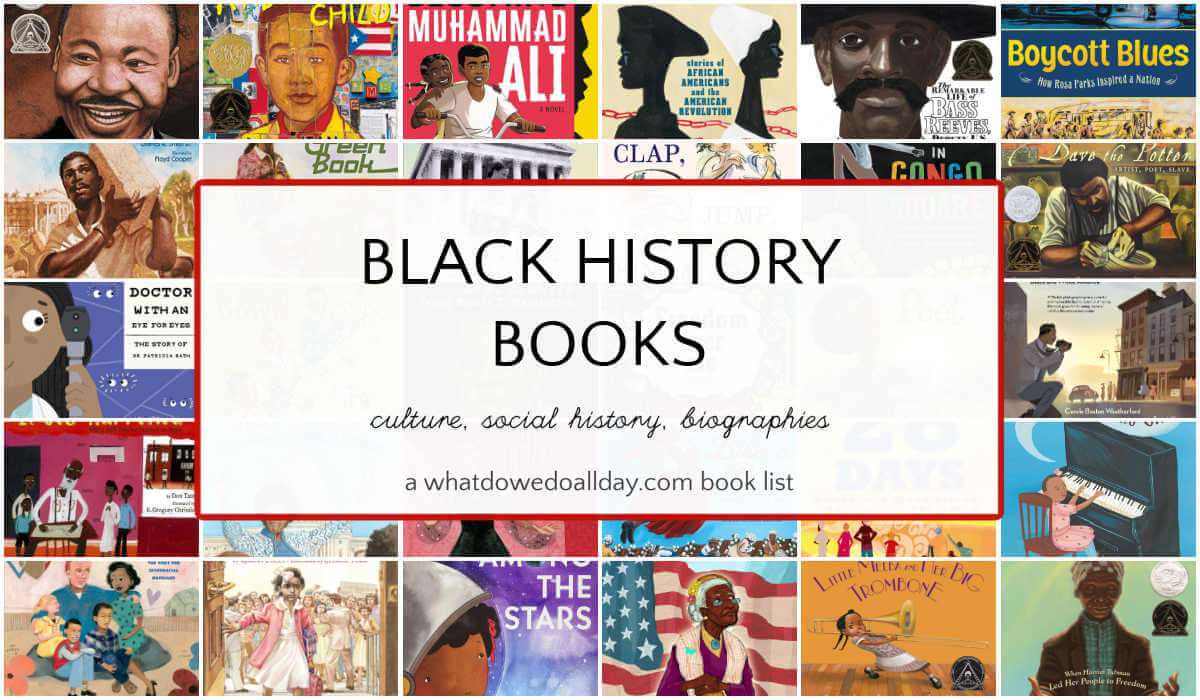
(Note: this post contains affiliate links that earn from qualifying purchases.)
Table of contents
African-American History and Culture Books
Books are listed in rough historical order, divided into picture books for a wide age range, and books for upper elementary and middle school.
MORE: Civil Rights Picture Books
Picture Books
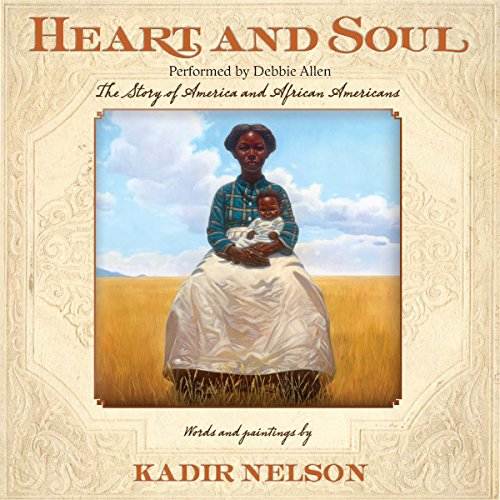
Heart and Soul: The Story of America and African Americans by Kadir Nelson. A 100 year old woman narrates this epic tale African-American history as though she is remembering the tales her ancestors told her. It's nice to have a beautiful book that covers a wide range of historical topics and is entirely appropriate for elementary school children. It is an overview of history and you will do well to supplement its reading with more specific books. Nelson's paintings are stunning, as usual.
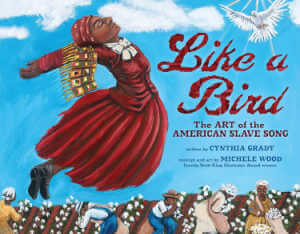
Like a Bird: The Art of the American Slave Song by Cynthia Grady, illustrated by Michele Wood. This gorgeous book contains the words and musical score of 13 slave spirituals. Each song is accompanied by a historical explanation of its meaning, and the Biblical references. Wood's illustrations are utterly gorgeous.
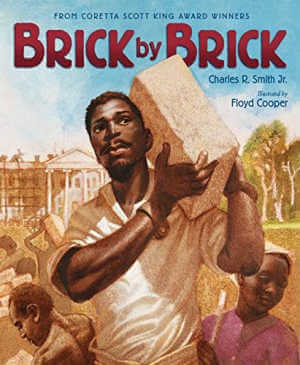
Brick by Brick by Charles R. Smith, Jr., illustrated by Floyd Cooper is a picture book that will get your kids thinking about the White House in an entirely new light. This is a fascinating book for adults, too and we will all do well to remember that enslaved individuals were a large part of the work force that hauled the bricks and erected one of our nation's most famous symbols of freedom.
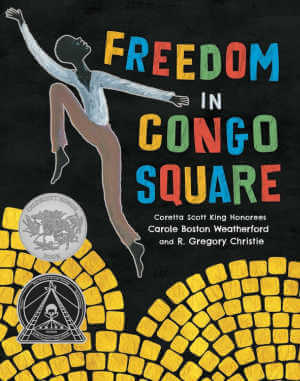
Freedom in Congo Square by Carole Boston Weatherford, illustrated by R. Gregory Christie. In 19th C. Louisiana, enslaved people were allowed to congregate in Congo Square on Sundays, a tradition which allowed the slaves to preserve some of their cultural heritage. The narrative follows the week of a slave up until Sunday. It is a powerful book, both in relating a little-known historical event but also in dubious meaning of the word, "freedom." A conversation-starter, for sure.
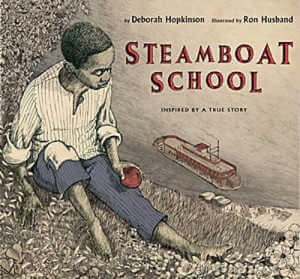
Steamboat School by Deborah Hopkinson, illustrated by Ron Husband. An 1847 law made it illegal for blacks, free or enslaved, to go to school. But Reverend John Meachum got around the law by holding school on a steamboat in the Mississippi River, which was federal, not state land.
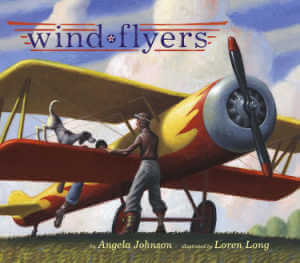
Wind Flyers by Angela Johnson, illustrated by Loren Long. A young boy in Alabama with dreams of flying ends up as one of the famed Tuskegee Airmen. The story is told through the eyes of a 5 year old boy, who narrates the tale of his great-uncle.
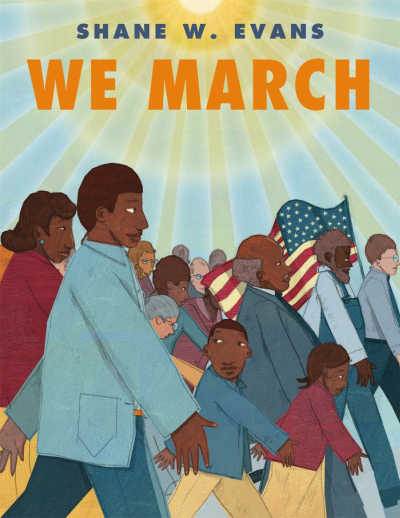
We March by Shane W. Evans. The spare text and brilliant illustrations make this a wonderful book for children as young as 3 years old. The light, first person narrative tells the story of a family getting ready to march in the historic event.
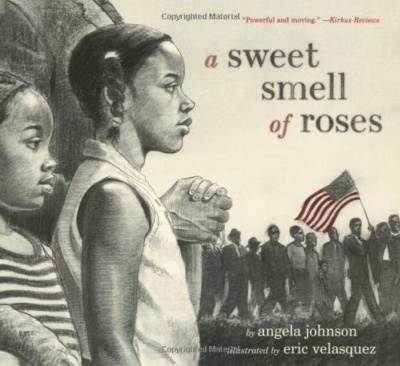
A Sweet Smell of Roses by Angela Johnson, illustrated by Eric Velazquez. A young girl, with her red-ribboned teddy bear describes her experience as she and her sister slip out of their house to join a freedom march. The focus is on the sensory experience. This is another lovely book that emphases how children were an integral part in the fight for freedom.
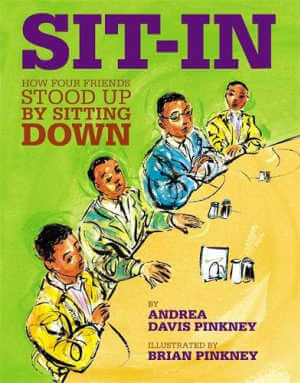
Sit-In: How Four Friends Stood Up by Sitting Down by Andrea Davis Pinkney, illustrated by Brian Pinkney. This is the story of the 1960 Greensboro lunch counter sit in. I quite enjoyed the food metaphors. “At first they were treated like the hole in the doughnut—invisible.” “The kids had a recipe, too. A new brew called integration.”
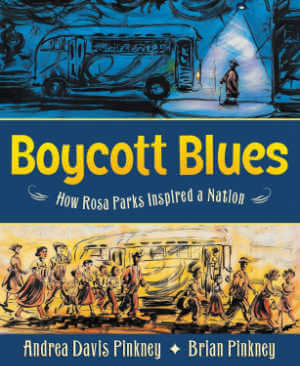
Boycott Blues: How Rosa Parks Inspired a Nation by Andrea Davis Pinkney, illustrated by Brian Pinkney. This book tells the story of how the African-American community walked for 382 days rather than ride the segregated busses in Montgomery, Alabama. The rhythmic text and vibrant illustrations, which themselves appear to move beautifully capture the spirit of the amazing individuals who brought change to their community and the nation.
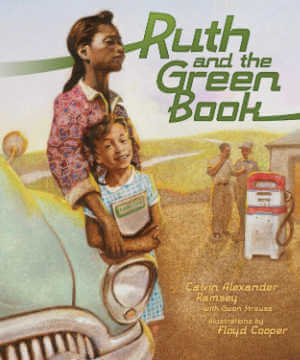
Ruth and the Green Book by Calvin Alexander Ramsey and Gwen Strauss, illustrated by Floyd Cooper From 1936-1964, “The Green Book” was a travel guide for African-Americans that included a listing of service stations that would serve them. Ruth and her family are en route from Chicago to Alabama to visit grandma. Ruth learns about Jim Crow laws for the first time and makes it her job to help navigate with the help of The Green Book.
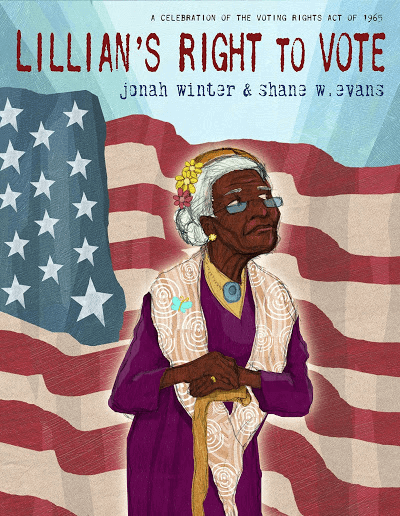
Lillian’s Right to Vote: A Celebration of the Voting Rights Act of 1965 by Jonah Winter, illustrated by Shane W. Evans. The elderly Lillian climbs a hill to vote for the first time. As she climbs she recalls the history of her family and African-Americans in her country and all it took to get to this point.
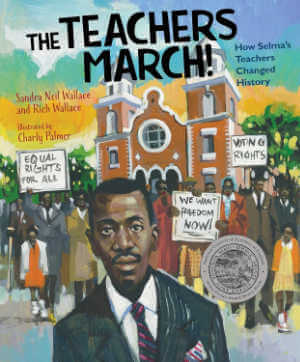
The Teachers March!: How Selma's Teachers Changed History by Sandra Neil Wallace and Rich Wallace, illustrated by Charly Palmer. This is a fascinating look at a little known event during the Civil Rights movement. Using extensive research, the authors tell the story of Reverend F.D. Reese, who organized his fellow educators to march for voting rights in 1965.
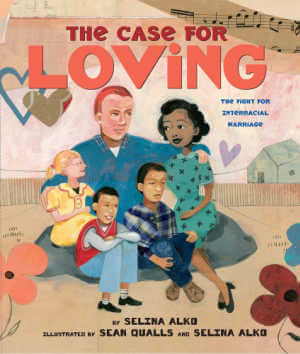
The Case for Loving: The Fight for Interracial Marriage by Selina Alko, illustrated by Selina Alko and Sean Qualls. This book tells the real life story of how one couple fought for and won their right to be legally married in the state of Virginia.
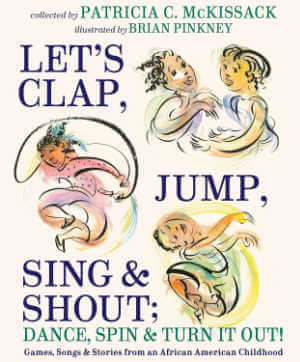
Let's Clap, Jump, Sing & Shout; Dance, Spin & Turn It Out!: Games, Songs, and Stories from an African American Childhood by Patricia C. McKissack, illustrated by Brian Pinkney. This is a fun collection of childhood songs, rhymes and games, folk stories and spirituals.
Upper Grades
Find more Black History books that includes novels based on historic events on the following list:
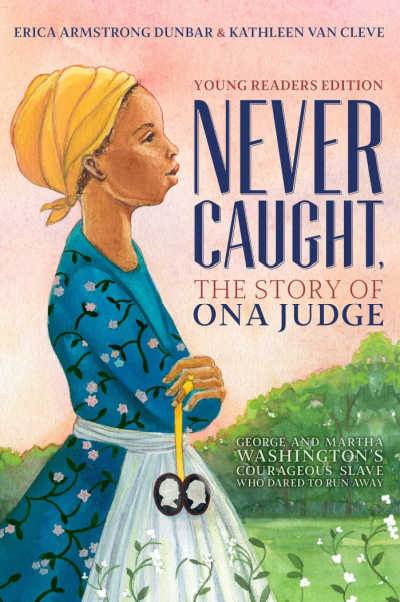
Never Caught, the Story of Ona Judge: George and Martha Washington’s Courageous Slave Who Dared to Run Away (Young Readers Edition) by Erica Armstrong Dunbar and Kathleen Van Cleve. Dunbar and Van Cleve have written an extremely readable biography detailing what Ona Judge’s life would have been like, how the Washingtons viewed slavery, how they treated their slaves, and crucially, how they pursued Judge after she escaped. This book is an eye-opener for children whose views of Washington were formed around the cherry tree myth. Did you know Washington attempted to break his own fugitive law in order to capture Judge? Not exactly the picture of a fair and just leader. That said, even though the author’s sympathies clearly lie with Judge, the book does not demonize the president. There is also an excellent picture book about Ona Judge, Runaway by Ray Anthony Shepard, illustrated by Keith Mallett.
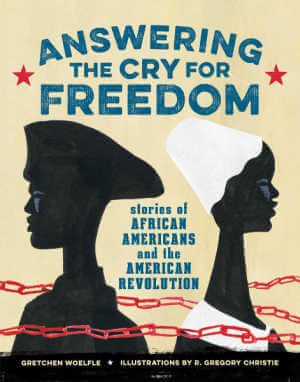
Answering the Cry for Freedom: Stories of African Americans and the American Revolution by Gretchen Woelfle, illustrated by R. Gregory Christie. Woelfle profiles thirteen African-Americans who lived during the American Revolution. Most of the names will be unfamiliar at first, but readers are destined never to forget their stories. I think this collection might serve the intended audience better as a read aloud rather than for independent reading. Parents and teachers can extend the conversation, and share one story at a time.
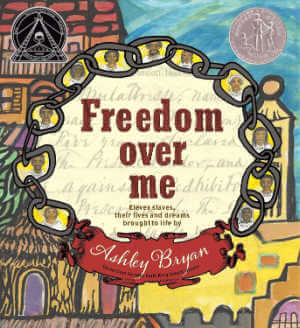
Freedom Over Me: Eleven Slaves, Their Lives and Dreams Brought to Life by Ashley Bryan. Bryan takes a historical estate document that details its slaves and their prices and turns it into a powerful book about the dreams of real people. She gives each unnamed slave a name, an age and vivid hopes and dreams. This is an extraordinarily powerful collection of poems and illustrations.

The Port Chicago 50: Disaster, Mutiny, and the Fight for Civil Rights by Steve Sheinkin is about a little known event in 1944 in which war and civil rights collided. 244 African-American soldiers refused to follow a command which they felt would have put them at unnecessary risk. For their stand, they were charged with mutiny. Sheinkin's book looks at the event, what led up to the mutiny and how differently the armed services treated its white and black soldiers. Fascinating.
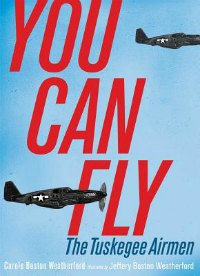
You Can Fly: The Tuskegee Airmen by Carole Boston Weatherford, illustrated by Jeffery Boston Weatherford. A powerful historical verse novel about the Tuskegee Airman who became some of the most successful WWII pilots, despite the rampant racism they faced.

We Are the Ship: The Story of Negro League Baseball by Kadir Nelson. This book is a fascinating narration of the history of the Negro League, its talented players, the struggle of the teams' owners and the important role the League played in the history of the sport in America. Kadir's text is engaging, and as always, his illustrations will amaze you and draw you into the emotional life of this historical period.
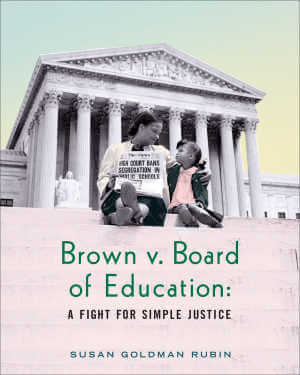
Brown v. Board of Education: A Fight for Simple Justice by Susan Goldman Rubin. A well-researched and compellingly written narrative about the people involved in bringing Brown v. Board of Education to trial. It helps to personalize the stories for today's children, as well as facilitating the translation of legal mumbo-jumble into easily understood text.

Voice of Freedom: Fannie Lou Hamer: The Spirit of the Civil Rights Movement by Carole Boston Weatherford, illustrated by Ekua Holmes. Poems tell the story of Fannie Lou Hamer's life, from her childhood as a sharecropper to her life as an activist. The text is emotional and doesn't gloss over Fannie's hardships, and the collage illustrations are stunning.
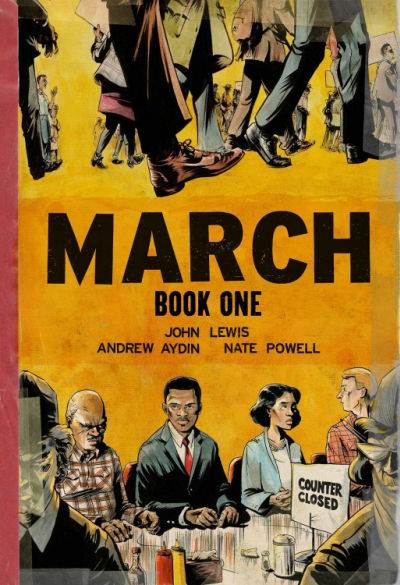
March by John Lewis and Andrew Ayden, illustrated by Nate Powell. A graphic novel trilogy by a civil rights activist about his experience during that tumultuous time.
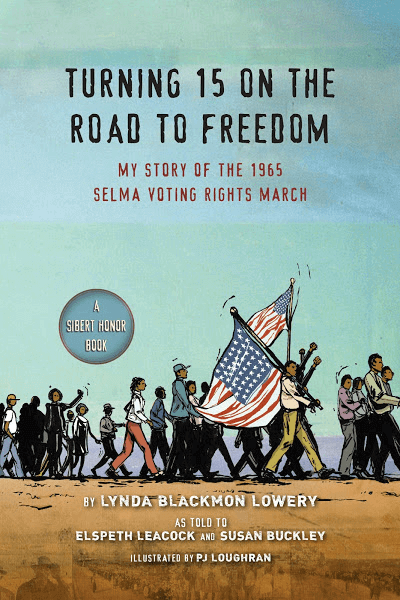
Turning 15 on the Road to Freedom: My Story of the Selma Voting Rights March by Lynda Blackmon Lowery, as told to Elspeth Leacock and Susan Buckley, illustrated by PJ Loughran. This book is an appealing conversation-style first person narrative by the youngest person to march all the way from Selma to Montgomery. Lowery describes her experience being jailed nine times (all before the age of 15) and beaten on Bloody Sunday in Selma, Alabama in a way that speaks directly to children and tells them they have a voice and can be history makers, too.
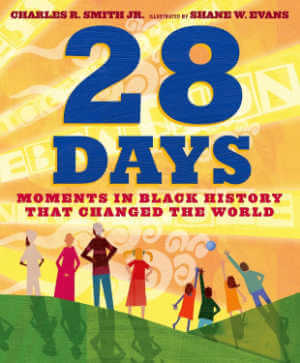
28 Days: Moments in Black History that Changed the World by Charles R. Smith, Jr., illustrated by Shane W. Evans. For each day in February, the book introduces readers to a different African-American who made an impact. 3 Supreme Court decisions and a constitutional amendment are also included. Although the format of the book does not support in-depth biographies, the book is chock full of interesting and important information.
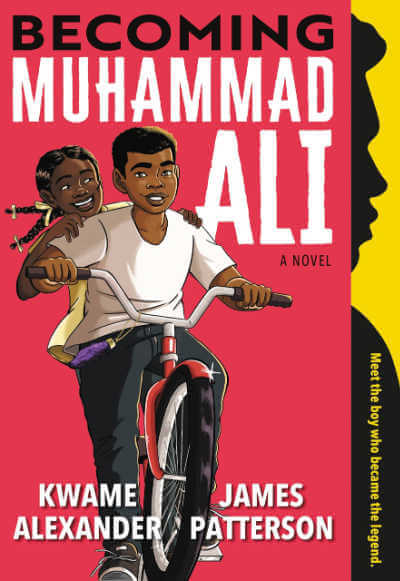
Becoming Mohammad Ali by Kwame Alexander and James Patterson, illustrated by
Dawud Anyabwile. This biography of Ali is written in verse, making it extremely accessible to all readers, even reluctant ones. I didn't actually know much about Ali's life and found this novelized biography fascinating. Alexander's verse captures Ali's dynamic personality and perseverance. It's an inspiration story for all of us.
African-American History Books: Biographies
I have been encouraged at the increasing library of picture book biographies of Black Americans. If you are ever concerned about the age range of any of these African-American history books, I recommend you preview the book. Please also see the following list:
- Picture Book Biographies of Amazing African-American Women
- Picture Book Biographies of Lesser-Known Black Heroes
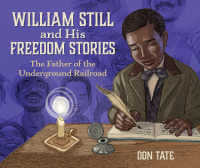
William Still and His Freedom Stories: the Father of the Underground Railroad by Don Tate. When you think of the Underground Railroad, William Still is probably not the first name to come to mind. This is the fascinating biography of a man who played a key role in preserving the stories of Black Americans who escaped to freedom in the 19th century. Tate begins his book with the life and escape from slavery of Still's parents and I appreciated his truth-telling about the actual conditions of the enslaved, instead of glossing over it. I read this out loud to my 12 year old and we both learned a lot.

Pathfinders: The Journeys of 16 Extraordinary Black Souls by Tonya Bolden. A collection of fascinating mini-biographies of men and women you never learned about in history class.
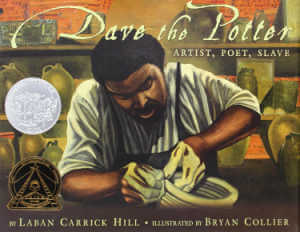
Dave the Potter: Artist, Poet, Slave by Laban Carrick Hill, illustrated by Bryan Collier. This Caldecott Honor book is one of my favorites on this list. Few slaves were allowed to learn a skilled trade, but Dave's story has reached us through his splendid pottery and the poetic words he inscribed on it. History knows Dave only by his first name, a few scattered mentions in historical papers and by the pottery he created. Yet, his story speaks volumes about the history of African-Americans and slavery in this country.
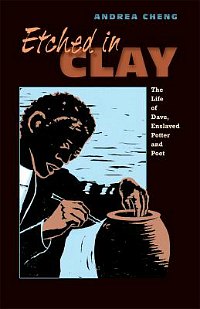
Etched in Clay: The Life of Dave, Enslaved Potter and Poet by Andrea Cheng. After reading the above picture book biography of Dave the Potter, turn to this biography in verse for middle school and high school students. Lee and Low has a fantastic teacher's guide for the book, to help kids dig deeper into Dave's live and the historical period.
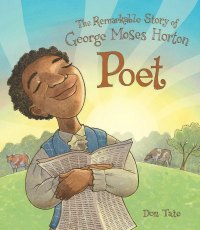
Poet: The Remarkable Story of George Moses Horton by Don Tate is indeed a remarkable and fascination historical biography of America's first working African-American poet. Horton was a slave in North Carolina who taught himself how to read, which was against the law. He sold produce at the market in order to make some money and when he started reciting his poetry, university students began to pay him to compose love poems so they could woo their sweethearts.
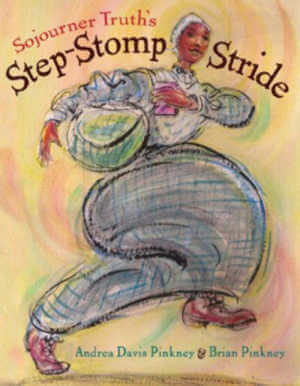
Sojourner Truth's Step-Stomp Stride by Andrea Davis Pinkney, illustrated by Brian Pinkney. A lively book about a woman who did not back down from what she believed in. Sojourner traveled around the countryside spreading her anti-slavery message, determined to make her voice heard.

Fifty Cents and a Dream: Young Booker T. Washington by Jabari Asim, illustrated by Bryan Collier. Asim tells Washington's story in beautiful free verse. Born a slave, Washington was determined to get an education and after emancipation walked 500 miles with a dream of earning a college degree.

Moses: When Harriet Tubman Led Her People to Freedom by Carole Boston Weatherford, illustrated by Kadir Nelson. This biography emphasizes Tubman’s spiritual journey as she determines that God has called her to help slaves escape to freedom. Weatherford’s lyrical text and Kadir’s expressive paintings bring this inspiring woman to life.
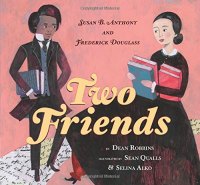
Two Friends: Susan B. Anthony and Frederick Douglass by Dean Robbins, illustrated by Sean Qualls and Selina Alko. Frederick Douglass was not just an abolitionist, he also worked with the women's rights movement. This picture books explores his friendship with Susan B. Anthony.
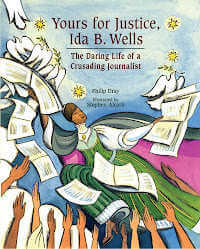
Yours for Justice, Ida B. Wells: The Daring Life of a Crusading Journalist by Philip Dray, illustrated Stephen Alcorn. In Post-Civil War America, Wells was an anti-lynching activist and one of the few successful Black Americans to win a legal battle in court. She wrote tirelessly against Jim Crow and refused to back down, even in the face of threats to her life.
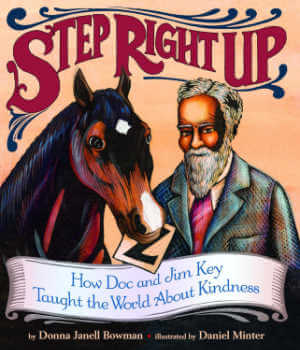
Step Right Up: How Doc and Jim Key Taught the World about Kindness by Donna Janell Bowman, illustrated by Daniel Minter. In the 19th century, William "Doc" Key, a man who was born a slave, became a successful businessman after the Civil War. Using kindness, Doc taught one of his horses to read, write and perform sums. Doc and Jim toured the country, showing off Jim's skills. Along the way Doc stood up to racism and the skepticism of others, teaching that it was kindness that inspired Jim to learn.
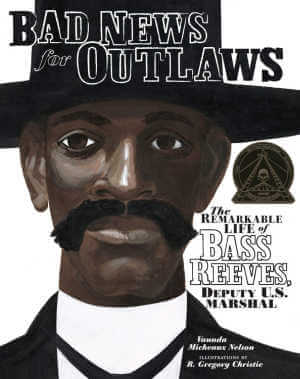
Bad News for Outlaws: The Remarkable Life of Bass Reeves, Deputy U. S. Marshal by Vaunda Micheaux Nelson, illustrated by R. Gregory Christie. Do your kids like the Wild, Wild West? Teach them about Bass Reeves, who was born a slave but escaped his master and ran away into Indian Territory. After the Civil War, Bass became a legendary deputy US Marshall, despite white folks' skepticism and racism. Ages 8 and up.

It Jes' Happened: When Bill Traylor Started to Draw by Don Tate, illustrated by R. Gregory Christie. Teach your children about this little known, but important artist. A self-taught artist, Traylor was born a slave. After the Civil War he lived and worked as a sharecropper. When he was 81 he moved off the land to Montgomery, Alabama where he started to draw.
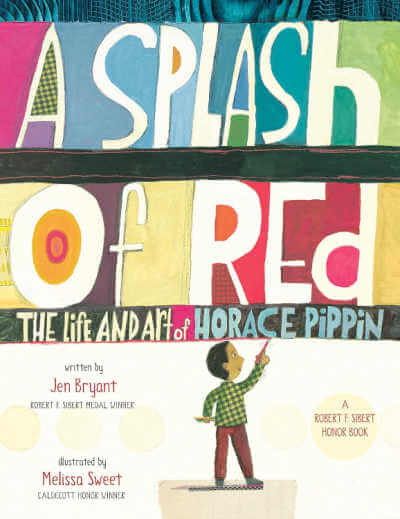
A Splash of Red: The Life and Art of Horace Pippin by Jen Bryant, illustrated by Melissa Sweet. Horace Pippin, who I'd never heard of before reading this picture book, was a self-taught painter. He was shot in the arm during WWI, but he worked steadily to learn how to use his arm again to create art.
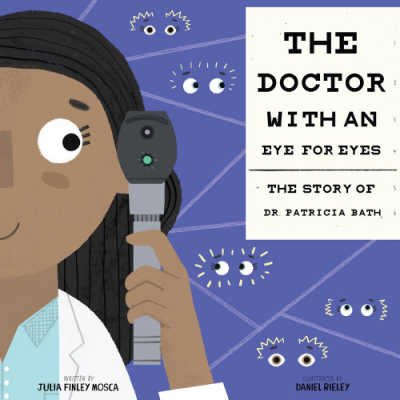
The Doctor with an Eye for Eyes: The Story of Dr. Patricia Bath by Julia Finley Mosca. This is a wonderful biography of a woman you have probably never heard of, but who has made significant contributions to medicine, including a treatment for blindness. Written in rhyme, the narrative flows well and the illustrations are engaging. End material, including a letter from Dr. Bath, photographs, a time line and further details about Dr. Bath's life and work make this biography extra special.

Hidden Figures: The True Story of Four Black Women and the Space Race by Margot Lee Shetterly, illustrated by Laura Freeman. A film by the same name brought these little known women into the light and we are all better for it! This is the story of four amazing mathematicians, Dorothy Vaughan, Mary Jackson, Katherine Johnson, and Christine Darden, who contributed to NASA's success by providing important calculations. But it wasn't easy and they had to overcome strong racial and gender barriers to succeed.
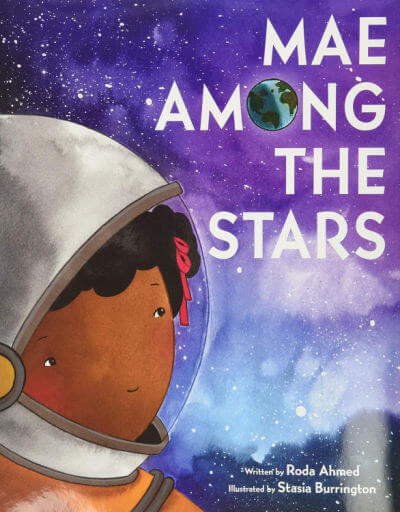
Mae Among the Stars by Roda Ahmed, illustrated by Stasia Burrington . Not as text heavy as many picture book biographies, this is a wonderful book about the first African-American in space, Mae Jemison, and it will inspire younger children. The narrative focuses on the young Mae and her dreams to see the earth from space. When she learns she needs to be an astronaut to go into space, she learns as much as she can about the stars and what it takes to be an astronaut. Her parents encourage her to dream big, even in the face of others' skepticism.
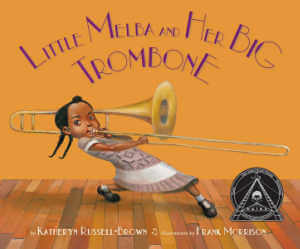
Little Melba and Her Big Trombone by Katheryn Russell-Brown, illustrated by Frank Morrison. A charming story about little known musician Melba Doretta Liston who taught herself to play the trombone when she was only 7! This is an extremely well-written jazz picture book about a musician you will wish you had known about much, much earlier.
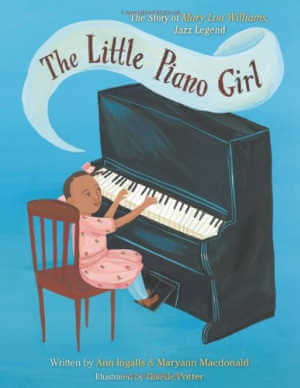
The Little Piano Girl: The Story of Mary Lou Williams, Jazz Legend by Ann Ingalls and Maryann Macdonald, illustrated by Giselle Potter focuses on the childhood of amazing pianist Mary Lou Williams and her impoverished background in Pittsburg where she charmed the neighbors with her magical playing.

Tiny Stitches: The Life of Medical Pioneer Vivien Thomas by Gwendolyn Hooks, illustrated by Colin Bootman. Vivien Thomas, unable to attend medical school for financial reasons, became a research assistant to a surgeon at the all-white Vanderbilt University. Thomas developed a surgical technique that Dr. Blalock used on the first open heart pediatric surgery. Rampant institutionalized racism meant Thomas had an uphill battle to earn the respect and credit he deserved but his legacy in the medical field is lasting.
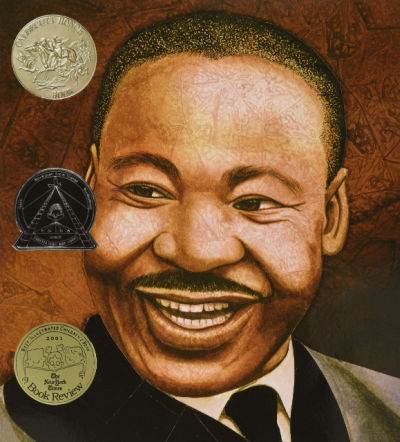
Martin's Big Words: The Life of Dr. Martin Luther King, Jr. by Doreen Rappaport, illustrated by Bryan Collier. This is a good beginner's guide to MLK. It's informative but not overly long as some picture book biographies can be. It gives a solid introduction to MLK's life and work and is beautifully illustrated.
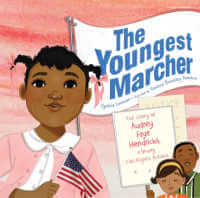
The Youngest Marcher: The Story of Audrey Faye Hendricks, a Young Civil Rights Activist by Cynthia Levinson, illustrated by Vanessa Brantley Newton. A story about the youngest known child to be arrested for standing up for civl rights. Audrey was nine when she was arrested in Birmingham, Alabama, 1963 during the civil rights march.
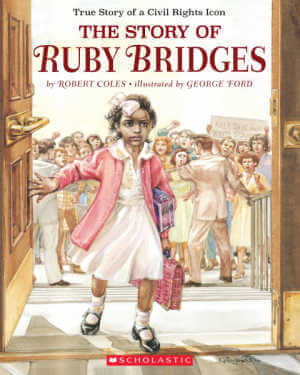
The Story Of Ruby Bridges by Robert Coles, illustrated by George Ford. This book celebrates six year old Ruby, who in 1960, faced angry crowds and empty classrooms as she became the first child to attend an all-white school after a court-ordered desegregation in New Orleans. Author Coles does a great job of making an historical event personal and showing how a child can overcome a difficult situation.
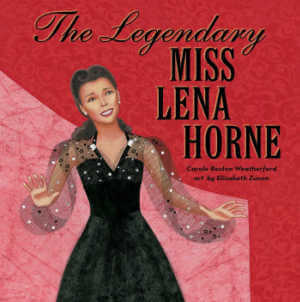
The Legendary Miss Lena Horne by Carole Boston Weatherford, illustrated by Elizabeth Zunon. This picture book biography tells the story of a woman who refused to play the stereotype rolls that Hollywood offered: nannies and maids. The narrative traces the highs and lows of her career and family life and kids will enjoy the little nod to her appearance on Sesame Street!

When Marian Sang: The True Recital of Marian Anderson by Pam Muñoz Ryan, illustrated by Brian Selznick. Like her jazz counterpart, Josephine Baker, contralto Marian Anderson found true acceptance first in Europe because Americans were unwilling to accept a black woman on the stage. When the DAR refused to allow her to perform at Constitution Hall, Eleanor Roosevelt arranged for her to sing at the Lincoln Memorial in 1939.
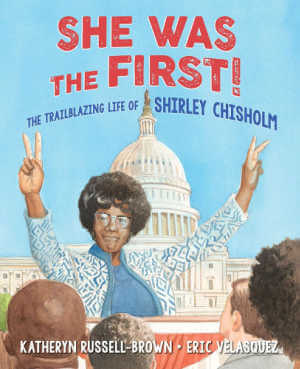
She Was the First!: The Trailblazing Life of Shirley Chisholm by Katheryn Russell-Brown, illustrated by Eric Velasquez. Russell-Brown's engaging biography of Chisholm narrates her journey from a young child with a talent for leadership to her life in politics. Readers will learn about how her experiences growing up in Barbados and New York influenced her desire to make change and fight on behalf of others. With the growing diversity in high political offices, this is an important read for children to learn about the long trajectory of the fight for representation and justice.
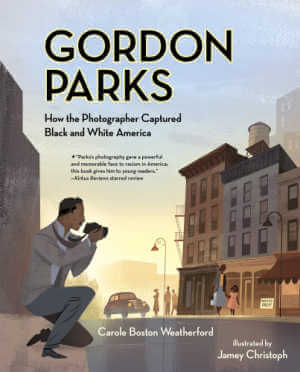
Gordon Parks: How the Photographer Captured Black and White America by Carole Boston Weatherford, illustrated by Jamey Christoph. Gordon Parks refused to accept his grade school teacher's assertion that Black Americans could only work service jobs. Instead he picked up a camera and became a self-taught photographer, working first in fashion and then as a government photographer.
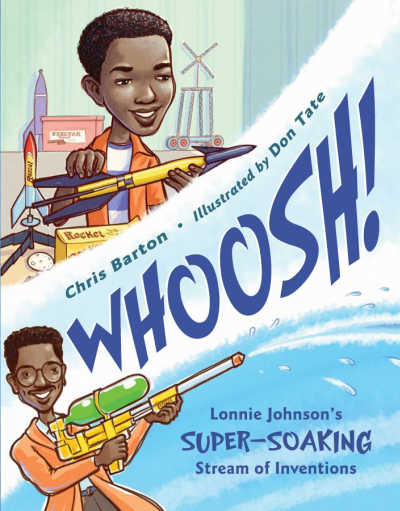
Whoosh!: Lonnie Johnson's Super-Soaking Stream of Inventions by Chris Barton, illustrated by Don Tate. Kids will love to learn how their favorite Super-Soaker toy was invented! The may also be surprised it was invented by a man who had a career at NASA.

Radiant Child: The Story of Young Artist Jean-Michel Basquiat, by Javaka Steptoe. An extraordinarily gorgeous book about a Brooklyn-born artist whose collage style brought him to the attention of the world in the late 20th Century.



Mary says
Hi, Erica. You might want to add two picture books to this list. They are White Water and Granddaddy's Turn, both by Michael Bandy.
Erica says
Great books!
Maura says
A useful review of the Master George's People book:
https://www.zinnedproject.org/materials/whitewashing-our-first-president/
Erica says
Thanks for sharing.
Erica says
I updated my post with a link to this article. I really appreciate you bringing it to my attention. It's a reminder that I am always learning. Thanks.
Cynthia Grady says
Thank you for the mention of Like a Bird: The Art of the American Slave Song! It's audience is growing slowly but surely!
Claire says
Thank you for this list! As I am going down the list, putting books on hold at the library, I am overwhelmed by the summaries of the stories. So much people have been through! So many gifts, so much suffering, so much courage! (Also, I noticed a couple typos in the summary of the book about the surgeon, Tiny Stitches? An apostrophe and a pronoun that made it a little confusing)
Erica says
I'm glad you like the book list. Thanks for telling me about the typos. It takes a village to proofread! 🙂